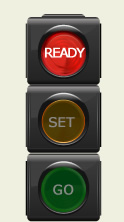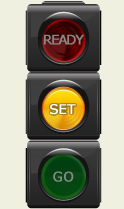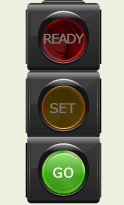 |
 |
 |
 |
 |
 |
 |
 |
 |
 |
Creating authentic learning experiences is essential in the transformation of math education and instruction. Authentic learning is student work that is real, actual, and genuine in all the aspects experienced by students (Knight, 2013). Too often we fail to ask the questions: “Is what I’m teaching purposeful? How is it relevant to the world I live in now?” It’s questions such as these that create pathways between content and real life application. Absence of these reflective questions results in students who have no idea why they are doing what they are doing (Pink, 209). Think of it as the fourth R: reading, writing, ‘rithmetic…and relevance (Pink, 2009).
|
|
|
 |
Get READY to to apply authentic, real world projects, based on highly motivating and engaging questions, tasks, or problems, to teach students academic content in the context of working cooperatively to solve the problems in math (Bender, 2012).
Criteria for authentic learning include:
| |
• Addresses a real-world issue |
| |
• Produces a real-world product |
| |
• Is assessed using a real-world criteria |
| |
• Engages students because they find it meaningful and personally relevant
(Knight, 2013)
|
Review Jim Knight’s High-Impact Instructional Toolkit for High-Impact Instruction to find additional resources on authentic learning (Bender, 2012). (Chapter 9) »
|
 |
 |
 |
Follow these three strategies to SET the stage for authentic learning from Accessible Mathematics: 10 Instructional Shifts that Raise Student Achievement by Steven Leinwand. In this book, the author proposes that in an effective math classroom that embeds realistic problems and real-world contexts we would see:
| • Frequent embedding of the mathematical skills and concepts they are teaching in contexts to connect the math to real-world situations, which looks like: |
| |
° Facilitate a team discussion focused around the question: In what ways are we taking into account our students lives and interests when developing activities for the classroom? |
| |
° Provide opportunities for student choice – allow students to select from an option of projects or real-world investigations. |
| • Frequent response to students’ answers with “Why?” “How do you know?”, “Convince me,” “Explain that please,” and “So, what questions arise?”, which looks like: |
| |
° After presenting relevant data, the teacher allows students to work in pairs and answer a question like, “So what would be interesting or informative about this?” |
| |
° Have your team develop purposeful objectives that include an intentional focus on analysis of the data/situation. |
| |
° Ask students to discuss reasonableness of their solution or future prediction. |
| • Problems that emerge from teacher asking, “When and where do normal human beings encounter the mathematics I need to teach?”, which looks like: |
| |
° Engage students in creating relevant, generation-specific examples which increase engagement and motivation. |
| |
° Facilitate a team discussion on when and where the skills taught are used in the real world. |
| |
° Allow students to research careers, which use the skills taught in class. |
|
 |
 |
 |
In an effort to narrow down the many resources available, GO to these Web sites to start creating authentic learning experiences for your students.
| |
• Khan Academy (App) is a non-profit educational organization created in 2006 by educator Salman Khan to provide "a free, world-class education for anyone, anywhere." The organization produces micro lectures in the form of You Tube videos. In addition to micro lectures, the organization's Web site features practice exercises and tools for educators. All resources are available for free to anyone around the world. |
| |
• Get the Math is about algebra in the real world. See how professionals use math in music, fashion, video games, restaurants, basketball, and special effects. Then take on interactive challenges related to those careers. Watch this intro video before trying one of the challenges. |
| |
• Math is Fun offers mathematics in an enjoyable and easy-to-learn manner, because we believe that mathematics is fun. Quality is important to us. Mathematics Teachers, Mathematicians, and many others work on this site. Typically each page is reviewed by at least three qualified people, plus millions of people view the site. |
|
 |
|
|









